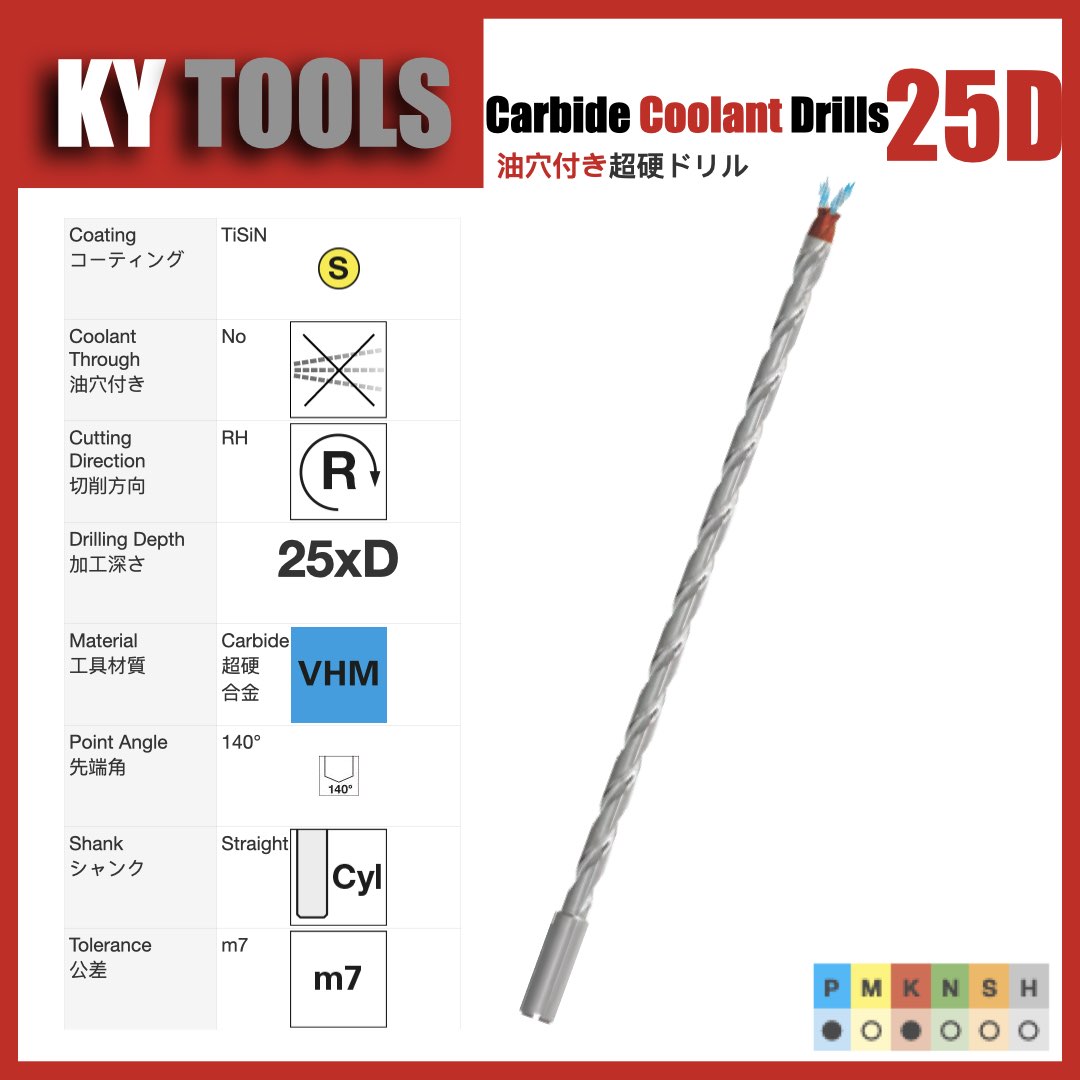
External Coolant Drills vs. Internal Coolant Drills: Which One Should You Choose?
Share
Introduction:
When it comes to drilling tools, choosing the right one can significantly impact the quality, efficiency, and cost-effectiveness of your operations. Two popular options are external coolant drills and internal coolant drills. Both offer distinct advantages, but which one is better suited for your specific needs? In this article, we'll compare external and internal coolant drills to help you make an informed decision for your machining processes.
What Are External Coolant Drills?
External coolant drills are traditional drilling tools that rely on coolant being applied from the outside. The coolant is usually delivered through the tool holder or a nozzle that directs the fluid to the cutting edge. This helps to cool the drill bit, flush away chips, and lubricate the cutting surface, improving tool performance and extending tool life.
What Are Internal Coolant Drills?
Internal coolant drills are equipped with built-in channels inside the drill body that allow coolant to flow directly to the cutting edge. This method delivers more targeted cooling and lubrication, ensuring that heat is dissipated more efficiently and the cutting area is consistently lubricated, even in deep holes.
Key Differences Between External and Internal Coolant Drills:
-
Cooling Efficiency:
-
External Coolant Drills: While effective for most drilling applications, external coolant delivery may struggle to keep up with the demands of deep hole drilling. The further the drill goes, the less efficient the coolant is at reaching the cutting edge.
-
Internal Coolant Drills: Internal coolant systems provide more direct and targeted cooling. The coolant flows directly to the cutting area, ensuring consistent lubrication and heat dissipation throughout the drilling process. This makes them more efficient for deeper and more intricate drilling tasks.
-
-
Chip Removal:
-
External Coolant Drills: External coolant is generally effective for removing chips from the cutting area, but as the drill deepens, chips may accumulate and interfere with the cutting process. This could lead to reduced precision and tool wear.
-
Internal Coolant Drills: Internal coolant drills excel at chip removal because the coolant continuously flushes chips out of the hole as they are produced. This reduces the likelihood of chip re-cutting and clogging, improving the overall efficiency of the process.
-
-
Tool Life and Durability:
-
External Coolant Drills: While external coolant helps to cool the drill, it’s not as effective at maintaining optimal temperatures in deep drilling operations. Excessive heat can cause the tool to wear faster, especially when working with tough materials.
-
Internal Coolant Drills: The direct coolant flow reduces friction and heat build-up at the cutting edge, increasing tool life significantly. This is especially beneficial for high-precision and high-speed drilling tasks.
-
-
Application and Depth of Drilling:
-
External Coolant Drills: These drills are generally better suited for shallow to medium-depth drilling, where external coolant can be applied effectively. They are ideal for operations where deep-hole drilling is not required.
-
Internal Coolant Drills: Internal coolant drills shine when it comes to deep hole drilling. The coolant's direct flow ensures the cutting area remains lubricated and cool, even at significant depths. These tools are preferred for operations where precision and reliability are paramount.
-
-
Cost Considerations:
-
External Coolant Drills: Typically, external coolant drills are less expensive upfront compared to their internal counterparts. They are also more common, which makes them easier to source and replace.
-
Internal Coolant Drills: Although more expensive initially, internal coolant drills tend to offer better ROI in the long run, especially in high-volume or demanding applications. The reduced need for external coolant supply systems and longer tool life often offset the higher cost.
-
When to Choose External Coolant Drills:
External coolant drills are a solid choice if your operations involve:
-
Shallow hole drilling.
-
Less complex or intricate machining tasks.
-
Working with softer materials or at lower cutting speeds.
-
Budget-conscious operations where the focus is on cost efficiency rather than tool longevity.
When to Choose Internal Coolant Drills:
Internal coolant drills are ideal for applications where:
-
You need to drill deep, precise holes.
-
You're working with hard-to-machine materials like titanium, stainless steel, or hardened alloys.
-
Maximizing tool life and minimizing downtime is critical.
-
Higher precision and better chip removal are required for your production.
Conclusion:
Both external and internal coolant drills have their place in modern machining operations. External coolant drills are more affordable and effective for shallow and less demanding tasks, while internal coolant drills offer superior cooling, longer tool life, and better performance for deep-hole drilling and high-precision applications. Understanding the specific needs of your projects will help you choose the right tool for the job.
At KYTOOLS, we offer a comprehensive range of coolant drills designed to meet your machining needs. Whether you need external coolant drills for general tasks or internal coolant drills for high-precision applications, we've got you covered. Browse our collection and choose the right drill to optimize your processes today.






